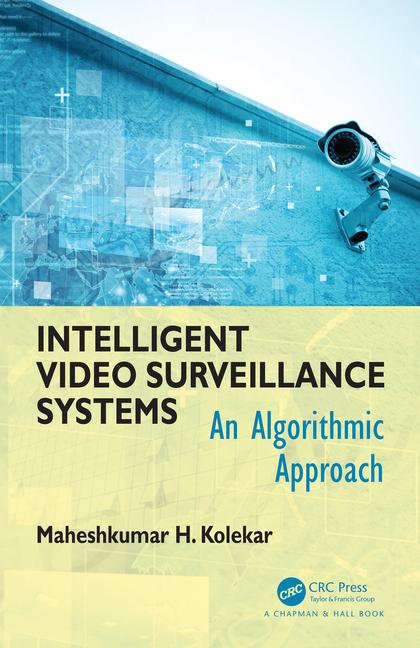Combine all these factors together and it’s easy to see why traffic control is a major issue in Colorado. Road closures have far greater impact than mere inconvenience. With traffic volume expected to increase across the United States by over 50 percent in the next decade, Colorado has taken a proactive stance to maintain control of its roadways while providing the public with valuable traffic data around the clock.
System Origins and Management
In February of 1997, the Colorado Transportation Resource and Information Partnership (TRIP) was established from an alliance of government transportation agencies and private companies to “preserve the quality of life in Colorado.” To accomplish this, TRIP set out to centralize the vast amount of traffic, airport, public transportation, incident reports and weather data from Colorado’s 13 separate transportation communication centers across the state so that information would be disseminated from the newly created Colorado Transportation Management Center (CTMC).CTMC’s operations are under the daily management of Frank Kinder, PE, ITS program manager, Colorado Department of Transportation (CDOT), Intelligent Transportation System (ITS) Office. Under his direction, the CTMC utilizes a multitude of information sources and technologies to monitor and manage Colorado’s roadways. These include a highly sophisticated network of surveillance cameras and switchers from Panasonic’s Security Systems Group along with programmable message boards, highway advisory radio stations, information kiosks, weather stations, loop detectors, vehicle location systems, phone recordings, fax and TV.
According to Kinder, CDOT received federal funding because the commission believed in what they were trying to accomplish, which is reflected in their mission statement:
The mission of Colorado Department of Transportation is to provide the best multi- modal transportation system for Colorado that most effectively moves people, goods and information.
“The information aspect of our mission is most important because so many businesses and people depend on our information when making travel plans — whether to and from work, or for commercial deliveries,” says Kinder. “The consensus was to install more video and dynamic message signs on the highways, and to integrate our weather systems—but we needed a core system to operate and control all these devices and systems.”
“We eventually received enough funding to get the system going. In the meantime, we had no control of the video that was installed by various contractors and integrators over time. That’s when we found out that video was going to be the hardest thing to coordinate,” continues Kinder. “We had a combination of manufacturer’s equipment scattered across the state—including the Panasonic video system installed at the Eisenhower Tunnel—that we needed to pull together. That’s about the time Richard Stenger joined our operation. He suggested that we outline our needs and objectives for the system so that we could approach the various companies with equipment installed in various locations to see how they could best meet our needs. At the same time, we needed to follow federal standards and convince the municipalities to go along with the statewide system.”
“If we have all these different systems, how can we integrate them to meet our goal of establishing a centralized traffic management center? Our plan was actually to install three main control centers with the main center here at CDOT with secondary centers on the west slope and in Colorado Springs for redundancy in the event of a catastrophe. Our biggest concern was to maintain control and communications with all of the roadways and tunnels in the event of an emergency,” says Kinder.
“In addition to sticking with one camera system, we also wanted a single software platform to manage all of this across the state. Having uniformity across the system is a big maintenance issue. CDOT had some infrastructure in place including fiber optics along much of the state highways, continues Kinder. “We worked barter deals with the telecom companies laying fiber to make a predetermined number of strands available to CDOT now and in the future so we could link our cameras and systems together. This was accomplished at virtually no cost to the state.”
“When we put up our first camera, I got phone calls asking what we were doing,” says Kinder. “There was this big brother attitude that people immediately took—that the state was watching them. Now that the system is up and running in many parts of the state, we get phone calls asking when cameras are going into an area—people want the ability to monitor their travel routes and we’re providing a readily accessible means to do so for the residents of Colorado.”
Selecting and Designing the System
“I’ve been working with Panasonic for about nine years on various projects, in Colorado, including the Eisenhower Tunnel where we have concerns with equipment working in high altitudes,” says Richard Stenger, Electronic Engineer, CDOT, ITS Office.“We initially looked at Panasonic and other prominent manufacturers for the Eisenhower Tunnel job, but had experienced reliability problems with most of the other manufacturers’ cameras,” says Stenger. “Prior to coming to CDOT, I had previously worked on security systems for prisons—the new Alcatraz in Illinois. The security contractor I was working with was a company that specialized in security systems for prisons. I asked the security company if they had a choice of any CCTV equipment they could have, what would it be—and they offered Panasonic.”
“When I came to CDOT for the statewide project, the staff was pretty much sold on another brand of cameras,” says Stenger. “To be objective and fair to all parties previously involved, we started from scratch and evaluated all the camera systems available. Panasonic beat them all hands down. Panasonic offers a superior system by far. Other manufacturers’ units that offer similar features to the Panasonic WV-CS854 Color Dome Camera did so at an additional cost with inferior quality.”
Panasonic’s WV-CS854 Color Dome Camera offers numerous performance advantages including automatic day/night operation, fast zoom speed and precision auto focus while in motion. In addition, the unit features Panasonic’s Super Dynamic II (SDII) technology that delivers a dynamic range 64 times greater than conventional video cameras to capture highly viewable color and/or black-and-white images under extreme lighting conditions within the same scene.
Panasonic’s WV-CS854A further distinguishes itself from competitive units by capturing high quality images with 755 x 485 pixels to deliver over 480 lines of color resolution and over 570 lines of B&W resolution. The unit also features a minimum illumination of only 1 lux for color and 0.06 lux in B&W; 64 preset positions with 8 presets for day/night operation; digital flip technology for 180 degree tilting; privacy zones; patrol learn function; digital motion detector and alarm output; multiple protocol compatibility for easy system integration; auto gain control circuit; digital noise reduction; 4 alarm inputs with 2 control outputs; optical slip ring for video transfer; and a drip proof enclosure.
“We clearly made the right decision and are extremely happy with the Panasonic color dome cameras performance and reliability,” says Stenger. “Then we went through the same evaluation procedure for switchers and determined that the Panasonic Matrix System 850 provides the camera capacity we need with complete control capabilities over the Panasonic dome cameras.”
CDOT’s complete camera and switcher comparative test results can be seen online at http://cotrip.org/its/whitepapers.html.
“There’s really nothing unique about us buying cameras and video switchers,” says Stenger. “What makes us unique is that we are taking multiple video switchers and tying them together so that we have a state-wide video system where we can share video and control in various locations.”
Getting It All Connected
Once the decision was made to go with Panasonics color dome cameras and matrix switching systems, the job of integrating the statewide system became the responsibility of Robert Wycoff, network analyst administrator, CDOT, ITS Office.As Wycoff explains, “The state of Colorado is made up of individual regions, which are somewhat autonomous. It has been a bit of a trial getting everyone to buy into this concept of a centralized ITS system. There are people in the rural areas that are very independent. They feel they don’t need Denver or the big cities to help them manage their roadways. We are a very rural state and some of that mentality holds true. The population is concentrated along the I25 corridor, mostly in Denver—other than that, everyone is pretty spread out.”
“The centralization of the system all started here in this facility. We started looking at standardizing all the equipment because we had equipment from all the major manufacturers in various locations. The reality for us was to put a standard in place,” says Wycoff. “Richard Stenger came down from the Eisenhower Tunnel to work with us and he was very pleased with the Panasonic system in place. So we compared all of the systems we had and Panasonic was clearly superior. All of the comparison information is available on our Web site in the technical papers area.”
“We made the decision to go with Panasonic Matrix System 850 for numerous reasons—but the most compelling is the system’s Ethernet IP capability. That in and of itself allows us to interconnect all of these video switchers together in a true network configuration. Only Panasonic’s Matrix System 850 offers this capability,” says Wycoff.
When fully configured, Panasonic’s Matrix System 850 can accommodate a maximum of 8192 cameras, 1024 monitors and 128 system controllers that make it ideal for large installations where extensive surveillance capabilities may be required. CDOT employs several Panasonic’s Matrix System 850’s, which are located in various regions throughout the state and tied to three centralized switching systems.
The Matrix System 850 provides advanced switching capabilities. Cameras can be automatically switched in tour or group sequences that are programmable through the system administration console. In addition, events can be programmed to combine camera-monitor selections with automated sequences. An operator can activate events by time/date programming, alarm activation or manually.
CDOT is building a three-tiered communications network that will be deployed throughout the state. The first tier is a statewide network that connects all the offices. The second tier is a regional network that connects all the offices, cities, counties and other agencies. The third tier is a local network intended to reduce fiber needs along each corridor and provide system access through the tier one and tier two networks.
“If you look at our network it is based on a three-tier architecture,” says Wycoff. “There will be three key switching areas that connect to numerous switchers in different municipalities. To date, a total of seven Panasonic Matrix System 850 switchers are in place with several more in various stages of planning and installation. We will partition the switchers so that the municipalities can control their own cameras and view other areas, but not be able to control them. We will have control of all the cameras in the system from CDOT.”
“Eventually, we want to cover every major highway. We have a capacity to accommodate approximately 9,000 cameras, which is our goal—it may never happen, but that’s our ideal objective. As major projects take off, like in the southeast corridor and the TREX project in Denver, we’ll be adding camera feeds from these new systems. Once we show these cameras are useful, the video will drive the entire network project across the state,” says Wycoff.
According to Wycoff, CDOT selected a Quark transport network to pull in the video from the various switching locations across the state. They selected the Nortel JMUX and 360 Surveillance’s Camera Chameleon server-to-server software based on its ability to handle all the switching capabilities they needed. In addition, the systems drivers are arranged in an umbrella system so CDOT can share video with all the different municipalities they need to integrate.
“We’ve put a JMUX in several locations and we’re looking at expanding the system into the I25 corridor so we can build one big video network in the metro area,” says Wycoff. “Then the municipalities can expand the systems to cover their own road systems and still be compatible with our statewide system. The Hanging Light Tunnel and Eisenhower Tunnel are also equipped with a JMUX so their Panasonic cameras are already on line. The whole idea is to try to build a video network statewide - and be able to access any camera in the system from our central locations.”
To help stimulate the municipalities to participate, CDOT is buying them their first Panasonic Matrix System 850, Panasonic WV-CS854 Color Dome Cameras and JMUX to tie into the main network.
“We are still building the fiber system to extend the system into some of the more remote areas that have large commuter populations. We have a large fiber backbone in place, which has allowed us to make the initial connections. Now we have some additional funding to further build-out the fiber network,” says Wycoff. “With fiber, it will be a lot more reasonable to deploy the system statewide.”
Getting the Information out
In addition to the hundreds of Panasonic WV-CS854 Color Dome Cameras in place and planned for future system expansion, the CDOT receives a continual stream of data from numerous sources. The sources include over 100 small weather stations positioned along major roadways, public information officers, loop detectors that count vehicles and monitor traffic speed, ramp meters and vehicle identification systems installed on public buses and tracked by satellite.Rod Mead, Colorado Transportation Management Center’s (CTMC) operations manager is responsible for daily operations of the advanced traffic management system (ATMS), which directly monitors traffic and weather conditions and responds to incidents in the Denver metro area. Mead was hired in 1993 to provide road and weather conditions for the state of Colorado. In the early days, three employees worked in a 60 square foot room with one phone, three fax machines and a computer. Today, the operation has grown to include one of the country’s most comprehensive traffic control networks operating 24 hours a day, 7 days a week.
“During snowstorms we used to staff 8-9 people in the office just to handle the phones. Now with the web site we don’t have that problem. The last time it snowed, we had 2.1 million hits on our Web site in 48 hours from people looking for information on road conditions. All they need to do is access our site and they can see how traffic is moving,” says Mead. “It’s testimony to how many people have come to rely on our traffic reporting network for accurate up-to-date information.”
The operations center’s main control room features a large projection screen and banks of color monitors to view video feeds from the Panasonic cameras. Real-time video and still images are also fed to CDOT’s Web site. The system’s operators maintain radio communications with CDOT field operations, various police departments and radio and TV commercial broadcast traffic reporters, including airborne units and the Mile High Courtesy Patrol.






